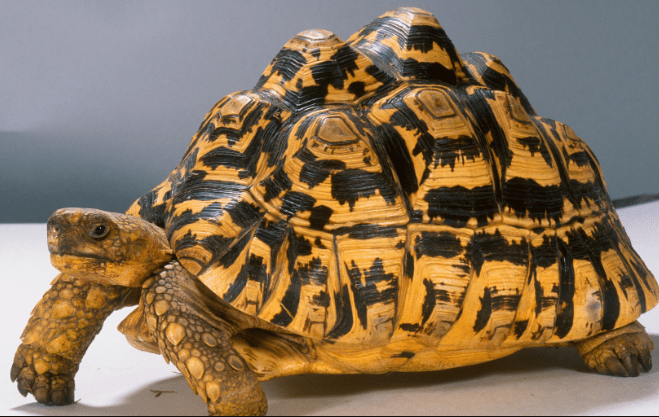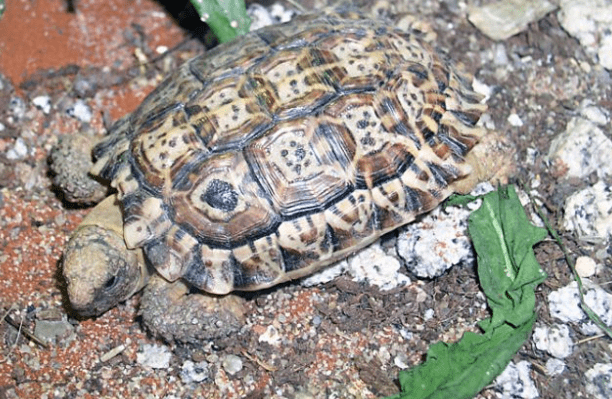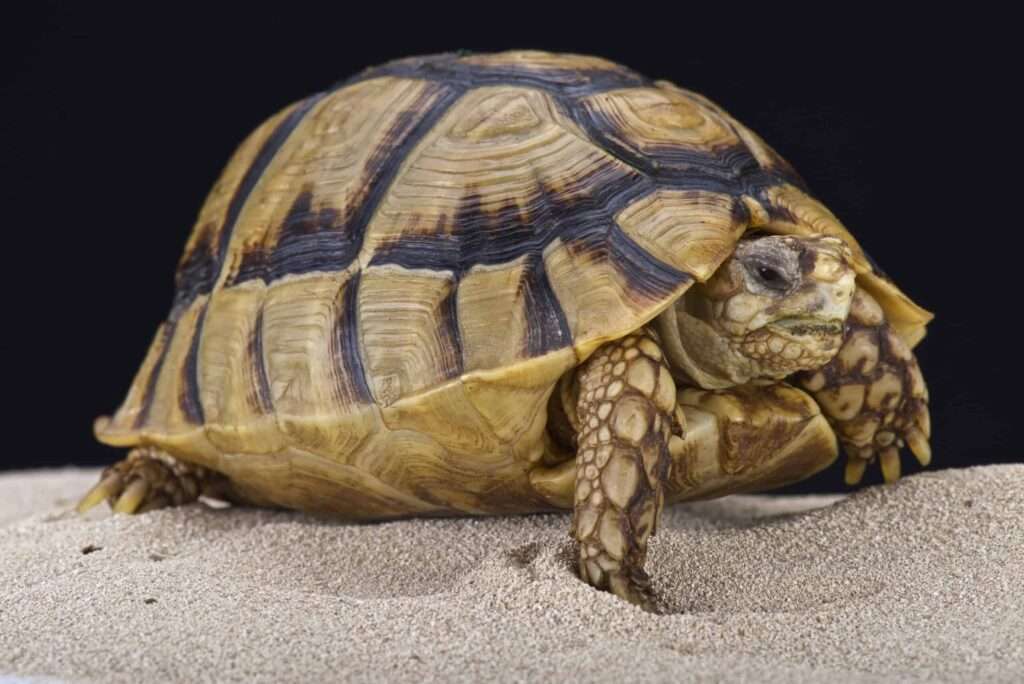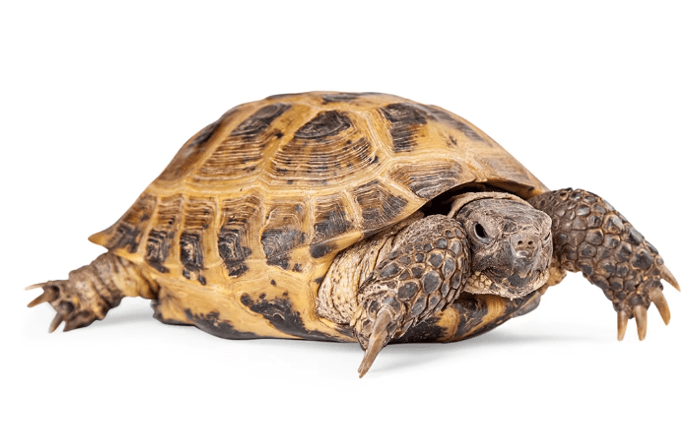
Description
The Leopard tortoise is a giant, gorgeous turtle and the fourth largest member of the family of tortoises. Their shell pattern is striking and serves as the ideal cover in its native habitat. Their distinctive colour pattern on the raised carapace, or shell, gives them their name. The bands of tan, brown, and yellow mimic leopard spots. These animals are timid, and when they detect any noise or danger, they retreat into the safety of their shell.
Habitat
From Ethiopia to Sudan, from Natal to southern Angola, as well as South Africa and a portion of southwestern Africa, leopard tortoises can be found on the savannas of Southern and Eastern Africa. The flora in the hot, dry savannas is limited, and the tortoises prefer semi-arid to grassland regions, which are typical of grazing animals. To escape the intense heat, they can frequently be found sleeping in shaded places or hiding beneath brushy bushes. However, some of them live in wet climates.
Behavior
It is not extremely sociable in this species. Males will struggle to establish dominance, but this dominance merely determines access to a certain female. The majority of a leopard tortoise’s day is spent eating and sleeping. They have “pigeon-toes” with a row of tiny “nails” on their front legs, which are paddle-shaped, and trunk-like hind legs. They can move swiftly and quickly across difficult terrain thanks to these legs. They travel slowly on average but can sprint if surprised or afraid. Due to the substantial lung capacity in their large, domed shell that provides buoyancy, they can also climb, float, and swim slowly. They have sharp eyesight that is well-developed. When frightened, a tortoise will hiss, albeit the sound doesn’t always come from the mouth. All of the air in their lungs is forced out of their lungs when it quickly draws its head, limbs, and body into its shell; this may produce a hiss.

Keeping as Pet
Housing
If you intend to keep a leopard tortoise in your garden, be sure that it has a hiding spot in its enclosure. It must be enclosed by fencing to keep predators out and give the tortoise a sense of security. Keep a leopard tortoise away from areas where even a kind dog might come into contact with it; the outcome might not be good for the tortoise. For the first several months of life, turtle hatchlings should be kept indoors and protected from predators.
Its container should resemble its natural habitat. Give it grasses to graze on, like lucerne. Water should always be supplied in a shallow pan, but watch so that the tortoise doesn’t become trapped in it.
Its container should resemble its natural habitat. Give it grasses to graze on, like lucerne. Water should always be supplied in a shallow pan, but watch so that the tortoise doesn’t become trapped in it.
Heat
All reptiles must control their body temperature because they are cold-blooded organisms. The ideal range for daily temperatures is between 75 and 90 degrees Fahrenheit, and the ideal range for nighttime temperatures is no lower than 70 degrees Fahrenheit. Leopard tortoises cannot survive in cooler or moister environments.
Create a sunbathing area with a temperature of 95 degrees. Use ceramic heater emitters or reptile heat bulbs to simulate these temperatures if you’re housing the animal indoors, and add a temperature gradient.
Food and Water
Herbivorous grazers during the day, leopard tortoises eat continuously. Their diet need to contain 98 percent high-fiber grasses and greens.1 Grass grown outside without pesticides is appropriate for grazing in warm weather. They should eat grasses, weeds, and dark leafy greens the majority of the time. On a bed of grass or hay, you can provide modest amounts of other vegetables (such as carrots, watercress, collard greens, and dandelion greens) every day at the same time.
Avoid giving a leopard tortoise leafy greens such as spinach, Swiss chard or beetroot greens that are high in oxalates. In excess, these vegetables and fruits might bind calcium in the meal, rendering it inaccessible to the tortoises.
Never give your leopard tortoise cat food, dog food, or any other animal protein. The kidneys of a tortoise can suffer from these diets. To compensate for the absence of sunlight, an indoor turtle needs extra nourishment. Give your pet a premium tortoise meal that has extra calcium and vitamin D3. To improve calcium absorption, tortoises can munch on cuttlebone pieces, which are typically found in the bird area of pet stores. Make sure your tortoise gets adequate fiber through a hay substrate for the health of its beak.
Every day, its water pan should be changed, cleaned, and refilled with filtered water.
Table





